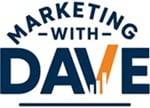Introducing the Indexed Pages Traffic Ratio: A Smarter Way to Measure SEO Health
Regardless of how you feel about certain content on your website, Google and other search engines will reward or penalize you based on how all of your content performs. As SEO expert Marie Haynes put it, “Google doesn’t hate your blog. It just doesn’t see a reason to crawl it again.” That’s why it’s essential to either continue optimizing underperforming content or remove it when necessary. Even though there’s no universal benchmark, your best insight comes from trending your own data over time. What Is the Indexed Pages Traffic Ratio? The Indexed Pages Traffic Ratio is your answer to the
